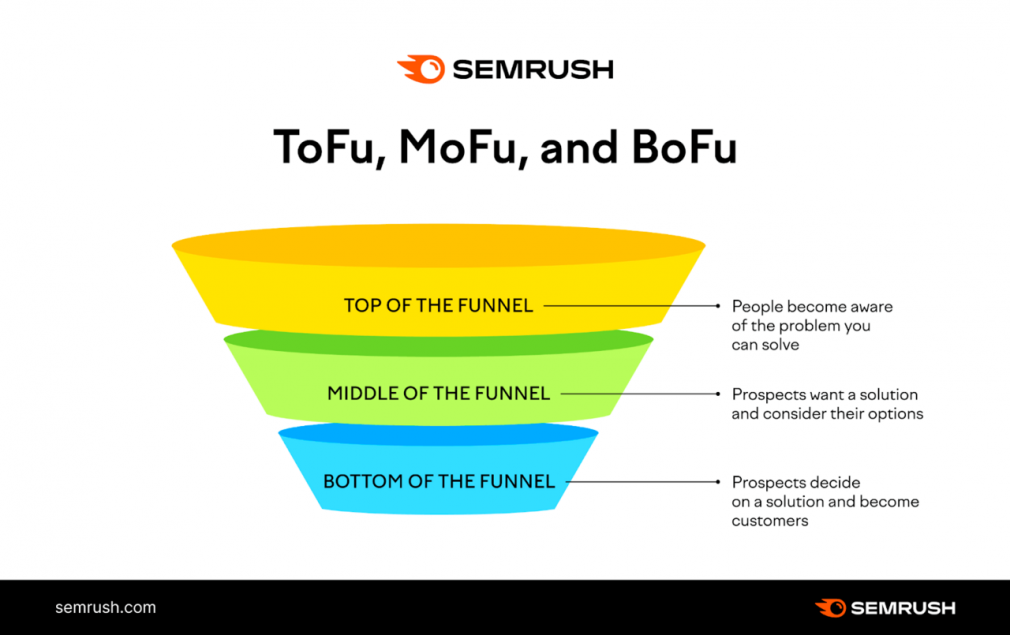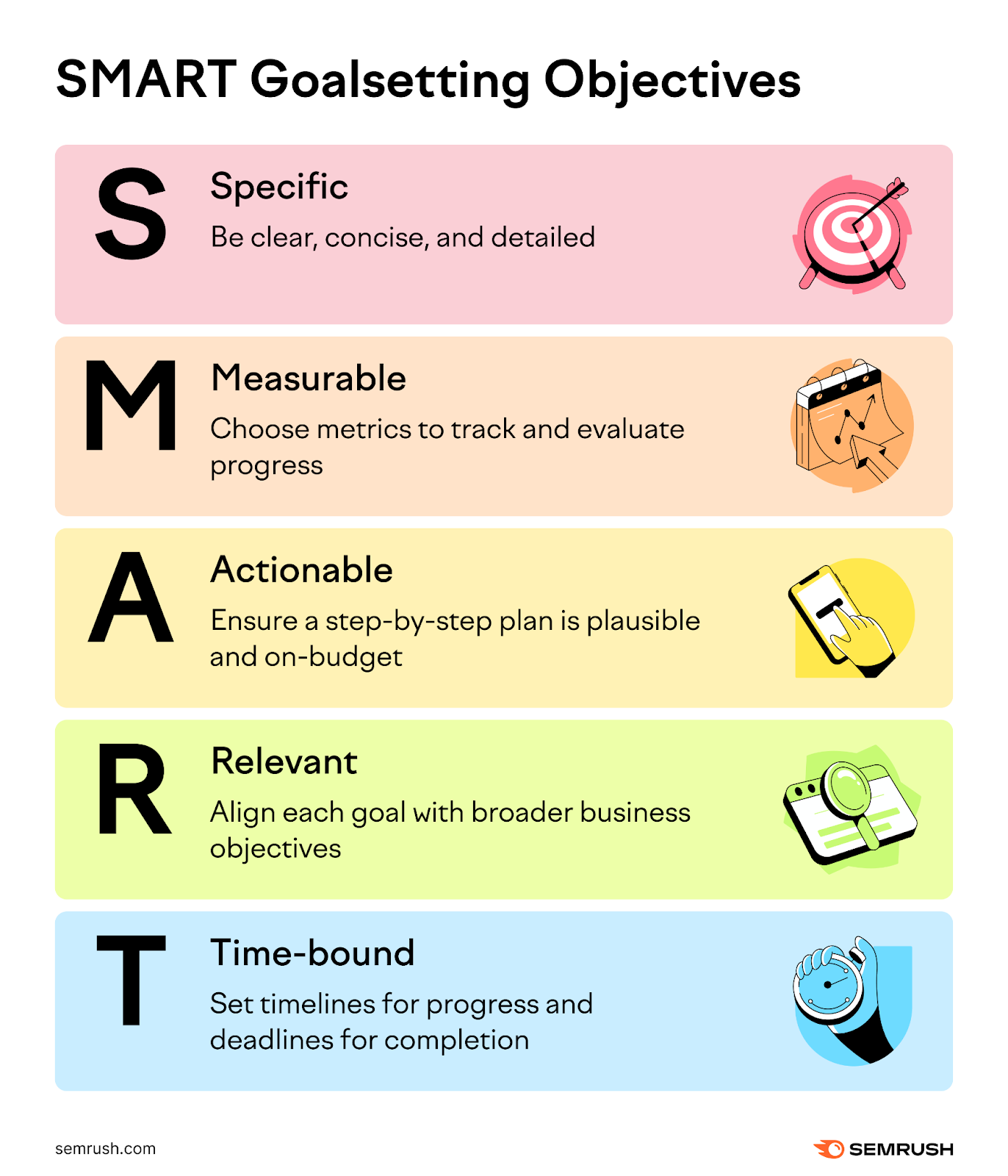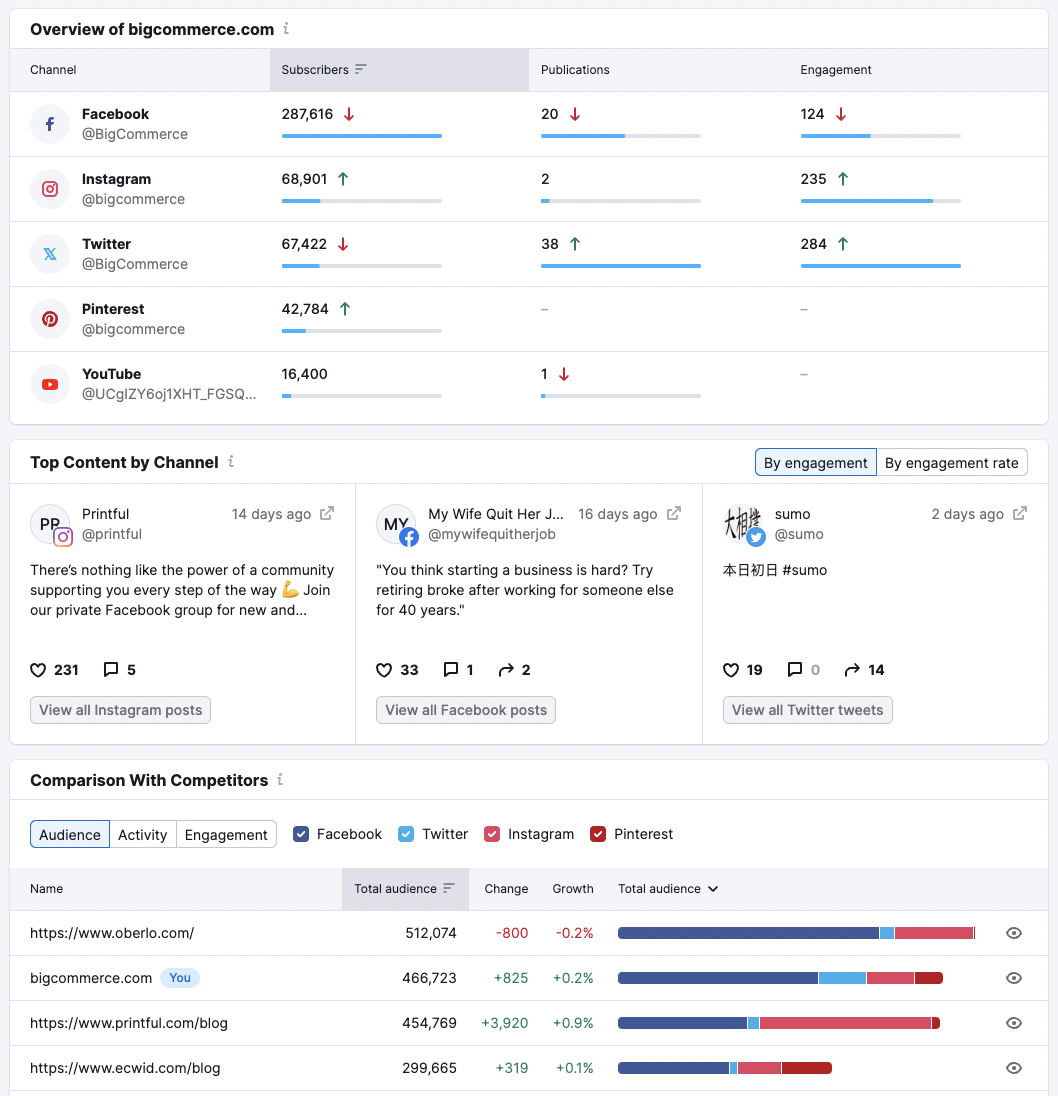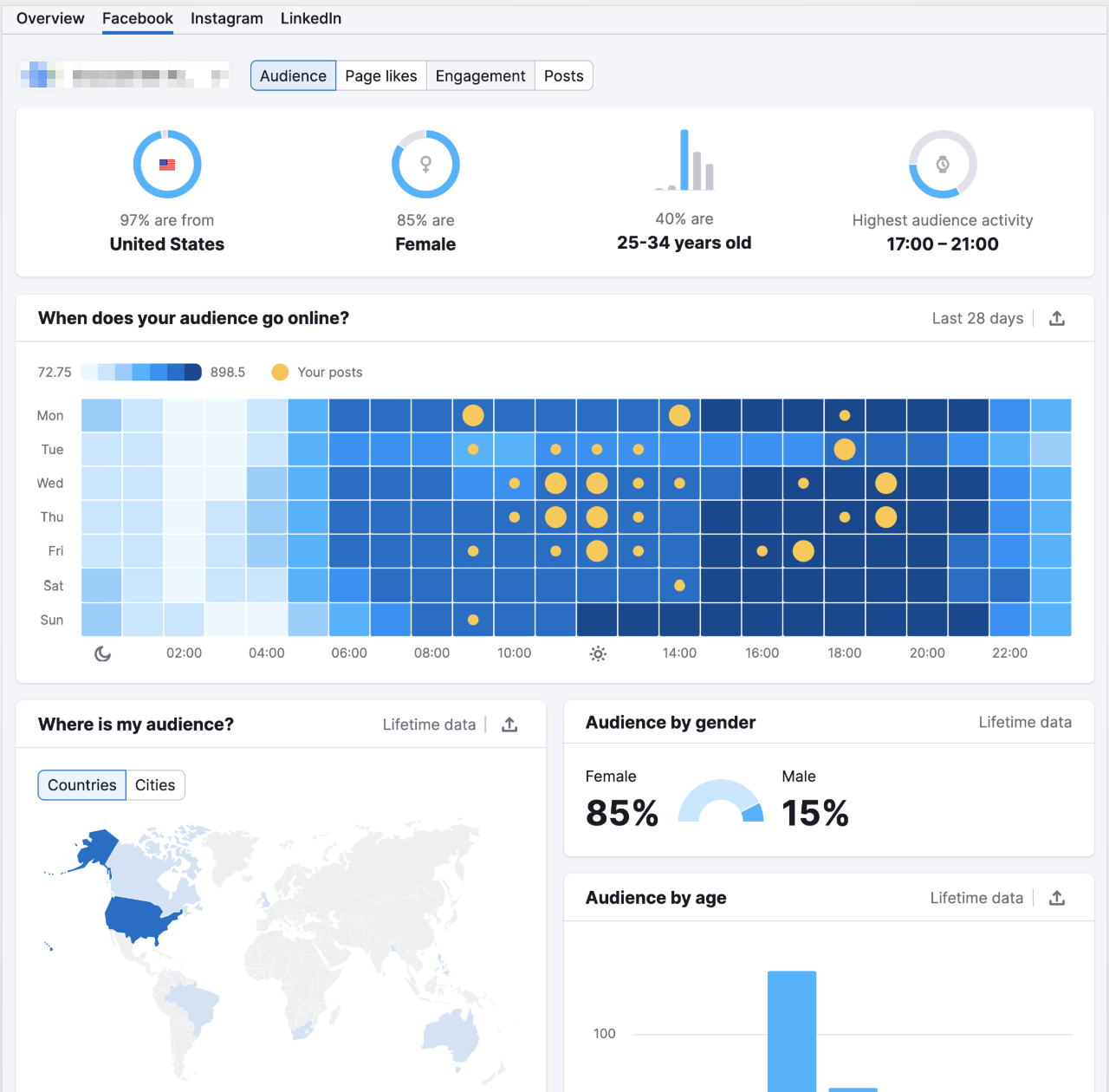Social media marketing has been relevant for a few decades now. Businesses of all sizes and in all sorts of industries have made the most of social media platforms and their integrated tools to promote their brand and what they’re selling. And its relevance hasn’t died down in the slightest. Between 2023 and 2024, the number of social media users grew by 320 million people.
Even if you’re a solopreneur or a small business owner, social media marketing isn’t a nice-to-have aspect of your marketing mix but rather a need-to-have. If you’re not hanging out where your audience is, then it’s unlikely they’ll hear what you have to say — or even know you exist. But managing your social media marketing can be hard if you already wear a bunch of hats and are worried about the learning curve that comes with each platform.
Here, we’ll show you what social media marketing is, explain why your business should be on social media, and give you valuable strategies and tips that won’t require much time, money, and effort.
What is Social Media Marketing?
The concept of social media marketing is threefold – to build your brand, to promote your product or service, and to foster a relationship with your customers. To achieve these goals, your task is to authentically connect with your audience on the social media platforms where they spend the most time.
This type of online marketing for businesses is all about enticing potential customers at the top of the funnel. Picture the customer journey as a funnel narrowing from top to bottom. The top of the funnel is where you interest customers enough to jump in.

While this might sound relatively simple, it’s about much more than simply counting likes and views and garnering followers. Effective social media use by businesses can bring a whole host of benefits – but whether your aim is to generate sales or drive traffic to your site, you need a well-strategized social media campaign to make sure you succeed.
Benefits of Social Media Marketing for Business
Getting started with social media marketing can be overwhelming. You need to know creative ways to promote your business on social media so people will bite, and you need to know how to carry out a well-informed strategy. But even if there are some initial bumps in the road, the benefits are too good to pass up.
Boosts Brand Awareness
Let’s revisit the statistic we looked at earlier – the fact that the number of people on social media increased by 320 million in just one year. To make all those new people aware of your product or service, you need to have a strong online presence. Without one, you’re missing out on millions (or billions) of potential customers. Take the language learning app Duolingo, for example. Their social media presence on X (formerly Twitter) is a real success story. Their edgy and outlandish posts capitalize on current social media trends and garner a lot of attention for their app. This playful approach aligns with their mission to make language learning fun and accessible.

Social media is the perfect place to tell your story and form a connection with people. You might create a post that goes viral, show off how your product is changing industry norms, or give people a peek behind the scenes of your brand. When people become curious about what you’re posting, they’re more likely to interact with and share that content.
Heightens Brand Loyalty
Doing business has always been about more than just the purchase itself. A successful business considers the entire customer experience, and the best kind of experience is personal and highly engaging.
Ryanair is a brand that executes this strategy perfectly, frequently quoting customer posts about their flying experiences with their company. They’re always on top of customer interactions, which helps them foster brand loyalty and enhance visibility, thanks to algorithms that favor increased interactions.

In these online communities, you can showcase the human side of your business and become a part of the daily online lives of your customers. Responding to queries quickly, resolving issues in a genuine manner, and acknowledging customer loyalty are just a few of the ways you can do so.
Semrush offers tools like Social Inbox that help you stay up-to-date with the incoming messages, comments, and mentions from all your social media accounts in one place. That way, you won’t miss a chance to connect with your audience.
Provides a Cost-Effective Advertising Solution
One of the most exciting benefits of social media marketing is that it’s a cost-effective way to advertise your products or services. Yes, paid ads exist, and they certainly have their merits. But with social media platforms, you don’t have to dig deep into your pockets for people to just get a glimpse of your brand.
Creating a profile on platforms like Instagram, TikTok, Facebook, and Snapchat costs absolutely nothing. Any business of any size can quickly get up and running and establish their brand presence across multiple platforms.
Of course, it’s important to figure out which platforms are worth using for your needs. Work out which platforms align best with your audience, goals, and brand, and then narrow your focus.
Your final task? To make sure you can get noticed in the clamor of brands all fighting for the same attention. That’s where your social media strategy comes in.
Key Components of a Good Social Media Marketing Strategy
Ready to perk up your social media presence? You’ll need a strong social media marketing strategy to support your initiative and keep you on track. Whether your product is unicorn glitter or an inflatable hammock, you’ll want to craft a proper plan of action so your efforts yield results.
Each part of the strategy should answer one specific question, and every good strategy will have these key components.
Set Clear Objectives
Question: “What exactly are we trying to achieve with our social media efforts?”
Outlining clear objectives will ensure you know why you’re doing what you’re doing. Perhaps you’re:
- Looking to bring in new customers or engage your existing ones
- Promoting a new product or service
- Creating a strong community around your brand
- Boosting brand awareness and visibility
- Increasing website traffic
- Driving conversions and sales through targeted campaigns
- Establishing authority through informative content
- Gaining insights into your audience using social listening
- Delivering better customer service through social media
No matter what, goals give your social media efforts direction – so long as they’re SMART (specific, measurable, achievable, relevant, and time-bound) goals.

Identify a Target Audience
Question: “Who are we aiming our content at?”
Without a specified audience to market to, you might as well be shouting at a random crowd without a megaphone. Here’s where being savvy about your audience comes in handy. Knowing who your target audience is, what they want and need, how they operate in the world, and what social media platforms they frequent allows you to tailor your content and message to attract and engage them.
Using Semrush’s Social Tracker, you can easily generate detailed reports for a variety of top social media platforms. This lets you quickly identify your audience. The Audience section in your report provides a trend summary of total page likes and a benchmark of change, growth, and engagement as compared to competitors, giving you an accurate picture of your social media standing.
In the Overview tab, you can view the performance of your competitors. Or you can check out deeper reports that give you a rundown on how often they’re posting, the engagement types they’re getting on particular posts, and set these as a benchmark for your own performance. You can also compare and contrast your brand against your competitors, giving you ideas on how to go above and beyond for your audience.

Competitor performance gives you valuable insights into the sort of audience base they’re attracting, especially when they are similar to your own target audience. If you spot that a certain post is getting a lot of engagement, then you can know that crafting similar content can help you exceed expectations.
Focus on a Few Key Platforms
Question: “Which of our target audience preferred platforms will give us the best impact?”
Although it might seem the best idea is to hop on every single social media platform out there, the smart idea is not to spread yourself too thin. Narrow your focus to the few platforms that you’ve discovered are most worth investing your time and resources into. Don’t waste your resources on platforms that don’t serve to enhance your visibility or engagement.
Proper analytics help you figure out where your competitors are most active on social media, and if their audience actually engages with their content. While you can do this manual research on your own, Social Tracker boasts an all-in-one dashboard that lets you study the competition easier and more deeply. You simply connect your social media accounts and add your competitors’ domains, and you instantly get the insights you’re looking for.
Maintain Consistent Branding
Question: “How can we keep our brand’s look, feel, and voice consistent across all social media platforms?”
Consistency is important in any relationship – and that includes your customers’ relationship with your brand. People want to recognize a brand right away, whether by tone of voice and messaging or through visual elements like brand colors or logo. Keeping these elements cohesive across all channels makes your business recognizable and reliable, so customers are more likely to spot your brand.
Create Engaging Content
Question: “What sort of content captivates our target audience and encourages them to take action?”
The content itself is what attracts your audience’s attention and encourages them to interact with your brand. While you might be compelled to write posts or create videos that seem trendy, they might not always resonate with your target audience. Consider what your specific audience finds exciting and speak their language – don’t just push your brand messaging on them. Are they after informative content to solve a problem, or would they prefer light and entertaining content? Whatever you put out on social media should do your brand and your audience justice.
If you’re looking for a quick and easy way to figure out the right content for your strategy, why not tap into what your competitors are doing? Social Tracker lets you pinpoint patterns in your competitors’ messaging and see what post types and formats are working best for their campaign. You can also check out their most engaging posts over specific timeframes and conjure up ideas for your own channels.
Perform Regular Monitoring and Analysis
Question: “How can we accurately track and analyze our social media performance?”
In the pursuit of creativity, don’t forget about the analytics. Having a dashboard that tells you exactly what’s going on across your campaigns will show you what’s working and what isn’t. With this information always available, you can understand where the likes, engagement, shares, and conversions are happening and why. That data lets you tweak anything that needs it and capitalize on the methods that are truly working.
Semrush’s Social Analytics tool is a must-have for getting a granular perspective of your engagement on Facebook, Instagram, and LinkedIn, your audience demographics and habits, and how your posts are performing. It’s the simplest way to find out everything you need to know about your profiles on these major social media platforms.
How to Create a Social Media Marketing Strategy: 5 Steps
-
Start with a Blueprint
No social media marketing strategy starts off without a whole lot of planning. We’re talking about defining those goals, recognizing your ideal customer base, and choosing the platforms you’re going to focus on. These key components often need refining and more refining, so spend a good chunk of time on them before you start posting. Some tried-and-true strategies include:
- Researching the competition: How are your competitors positioning themselves and what are they offering their audience? How are their customers responding? Look at both sides of the coin to see where your competitors are doing well or poorly, and how you can learn from them.
- Creating detailed customer avatars: As well as your customer’s gender, age, and other demographic basics, make sure you capture qualities such as interests, pain points, values, habits, and lifestyle. This helps you create a customer avatar that lets you understand how your product or service fits into their day-to-day life.
- Defining your own brand’s value propositions: What exactly is it about your product or service that makes it unique and not just another run-of-the-mill item? Why would customers choose your brand over all the others, especially if you’re in a common niche? A strong value proposition needs to communicate this notion clearly and succinctly.
-
Develop a Content Strategy
Since the type of content you post will determine how your audience sees your brand and how engaged they’ll end up being, a content strategy is important to have. So many types of content exist, but only a few will resonate with your particular audience. If there’s one that specifically stands out from the rest, capitalize on it, but do leave room for a balanced content mix.
The goal is to plan for real-time content that entertains and inspires while subtly weaving in your promotional content. The most useful way to do this is through a content calendar, where you can plan and manage your posts across all social platforms.
-
Plan Your Posting Schedule
To complement that content calendar, you need to go into detail and plan out a posting schedule. It’s not enough to just post whenever you have the time to do so – you need to post when your followers are most active and be consistent with it.
Semrush’s Social Analytics tool can help you get the most out of your posts by showing you when your activity is at its peak. And with Social Poster, you won’t have to constantly worry about posting at the right time – you can simply plan posts ahead of time and schedule content effortlessly. When you’re ready to schedule, hover your cursor over the graph to see peak online times for your followers and select those optimal windows for your posts.
It’s also wise to consider the platform you’re posting on, as each has different unwritten “rules” for posting frequency. On X, it’s quite common to post multiple times a day, while on Facebook, it’s more suitable to post a few times a week. Social Poster can automate the posting process and track your performance all in one place.

-
Foster Engagement
What separates the good brands from the greats is active engagement — chatting with customers in the comments, creating a two-way dialogue, and encouraging community development. This type of engagement on social media doesn’t always have to be stiff and planned either, as you can spark conversions through wit and humor, playing on trending topics, or sharing user-generated content.
But with so many social media platforms profiles in play, how can you possibly manage them all effectively? Social Inbox acts as a central hub for all your mentions, messages, comments and other communication efforts, so you can reply to them all on one interface. Using this nifty tool means you’ll never have to consistently monitor each separate platform or worry about missing important interactions again. Along with templates for fast-replies, the entire process becomes a much easier feat.
-
Evaluate and Adjust
Once your posts become public, you can’t just leave them to their own devices. If you want your social media strategy to thrive, each post should be evaluated using platform-specific analytics tools or external analytics tools so you get insight into how it’s doing in terms of engagement.
If your posts are appealing to your audience and doing well, then great! If not, then it may be time to tweak your strategy for better results. Ask yourself these questions:
- Is your content resonating with your audience? Anything you post should be appealing, useful, informative, or somehow valuable to that target group. In this case, Social Tracker can jump in to help you gain a better understanding of their preferences.
- Are you posting at the right times for visibility and engagement? Are you missing your audience when they’re most active online? Social Poster can show you when exactly to post to optimize your efforts.
- Do the visuals and copy align with your brand image? Maybe your audience isn’t connecting the dots between your content and your brand, and you need to revisit the drawing board. Come together with your team and reevaluate the components that make up your brand experience.
Finding the Right Tools
Having the right set of tools in your toolkit will give you the edge over the competition — and over social media marketing itself.
Semrush Social lets you:
- Track and analyze the social media accounts of your closest competitors in Social Tracker: Compare their growth and engagement levels to yours, identify the top-performing content in your niche, uncover your competitors' strategy to stay aware of your audience’s social media preferences.
- Draft, schedule, and post content on your social profiles with Social Poster: Use an interactive calendar to plan out the entire year. With a special addition of the Social Content AI you can even generate 1,000+ content ideas a day and generate posts with images and videos in seconds.
- Centralize your community management: Consolidate and manage all your communication in one place and harness customizable message templates for easy responses.
7 Top Social Media Marketing Platforms for Business
Not sure where to start? Here are the best social media for businesses to consider:
- TikTok: TikTok is famous for its short-form video content that attracts a younger crowd. Brands who want to tap into virality, trending topics, and entertaining content should consider this platform.
- LinkedIn: On the other end of the spectrum is the networking platform LinkedIn, which is more suitable for B2B businesses looking to create professional industry-specific content and publish thought-leadership pieces.
- Instagram: Instagram is a go-to platform for all things visual. With their range of useful features such as Shopping, Stories, IGTV, and more, it’s the ideal place for creative brand storytelling.
- Facebook: Facebook caters to a very wide demographic, which is why almost all businesses have a presence on the site. It excels most in community building, targeted advertising, and customer service, with several post formats to get creative with.
- Pinterest: Industries such as design, fashion, and nutrition will do best on Pinterest, thanks to its highly shareable Pins and shopping capabilities to drive traffic and sales.
- X (formerly Twitter): X thrives when it comes to real-time updates and quirky threads, meaning that businesses can interact with customers fast and authentically.
- Google My Business: Although not traditionally considered a social media platform, Google My Business is a must-have for targeting local customers. It gives businesses a robust presence across Google, including Search and Maps, letting them update through the Posts function and allowing for customer reviews.
Frequently Asked Questions (FAQs)
What is the best social media management software?
There are a variety of social media management software options out there to meet specific needs and goals, but Semrush Social stands out with its comprehensive approach. Semrush Social doesn’t just handle one aspect of social media management – it does it all with its efficient posting and scheduling tools (Social Poster), full conversations management hub (Social Inbox), Google My Business management, advanced analytics tools (Social Analytics), content insights tool, an AI assistant, and more – all without the need for a dedicated social media manager.
What’s the difference between a social media ad and a social media post?
A social media post refers to any regular content that is shared on your profile and is publicly available for anyone to see. On the other hand, social media ads are typically paid content that is curated for a specific target audience based on their demographics, behaviors, and more. This content targets anyone on the platform who fits the set criteria, regardless of whether they follow you or not.
What is the best way to handle negative customer comments on social media?
Handling negative customer comments can feel like walking on eggshells, but responding quickly and professionally is always the right way to go. Customers want to feel heard and valued, which means you don’t want to simply provide a copy-and-paste robotic response. Instead, be genuinely apologetic, speak to them privately, and make sure they get the assistance they need.
